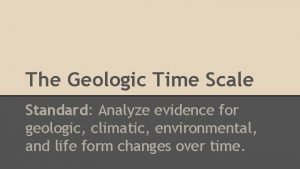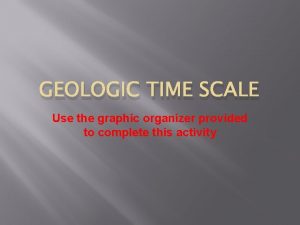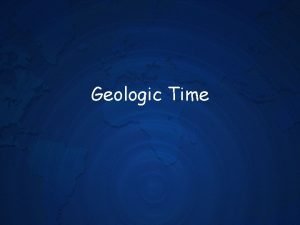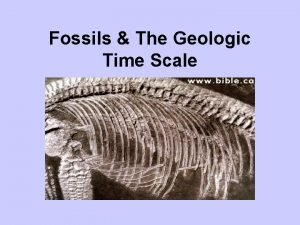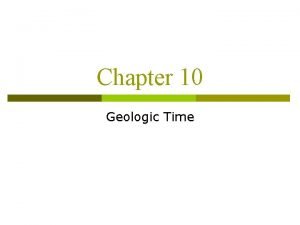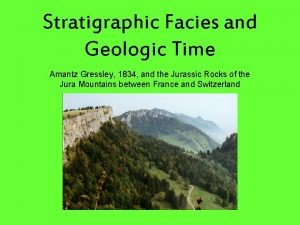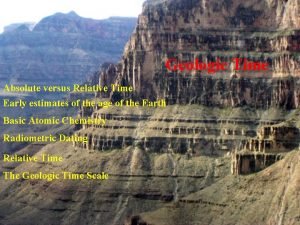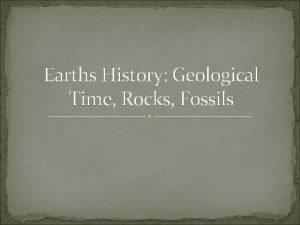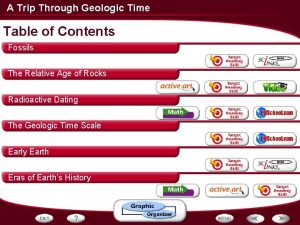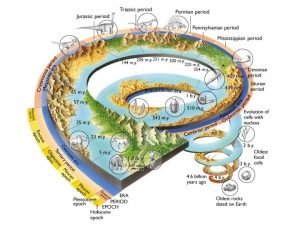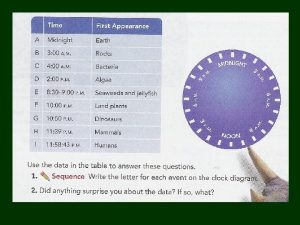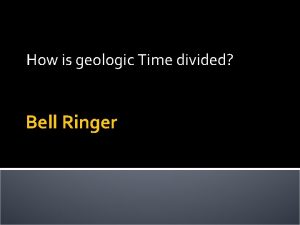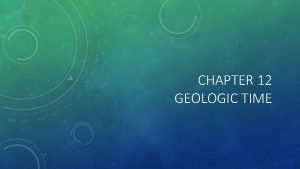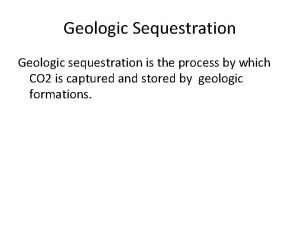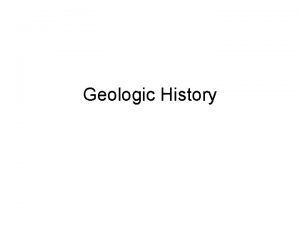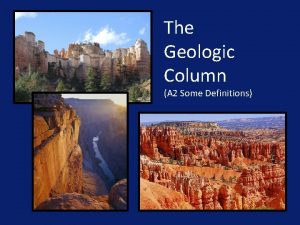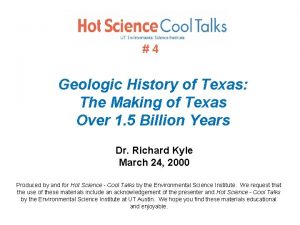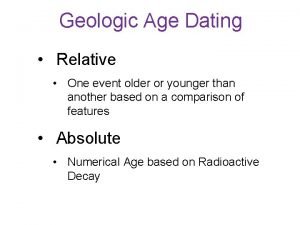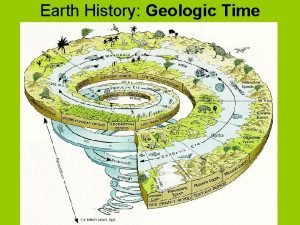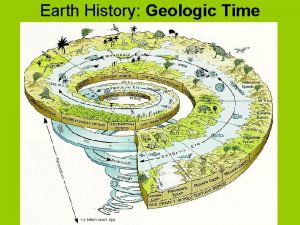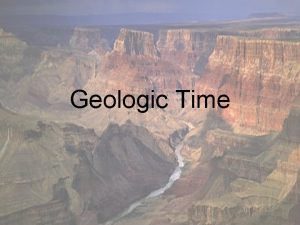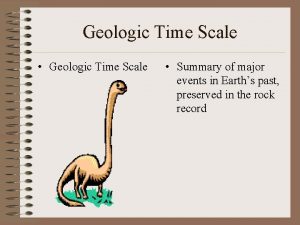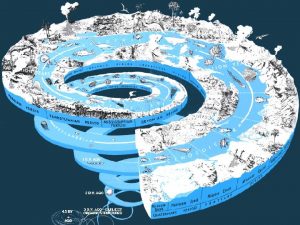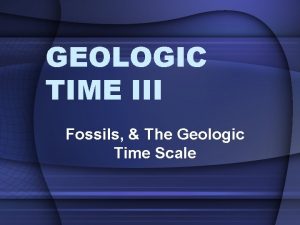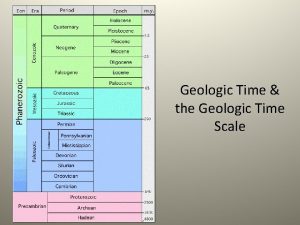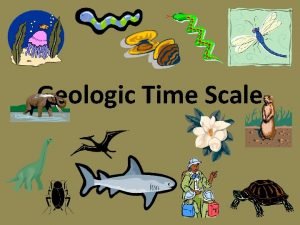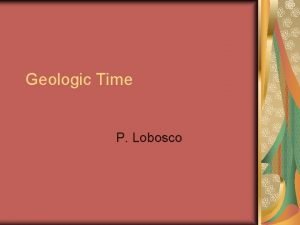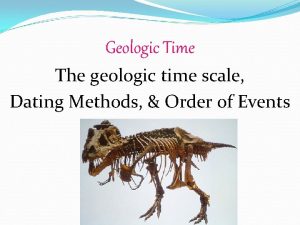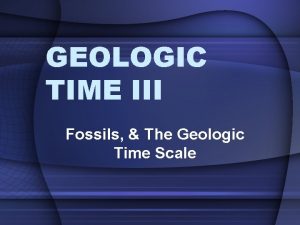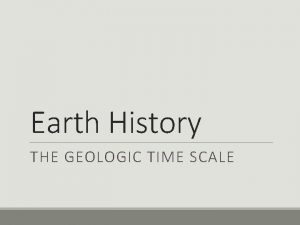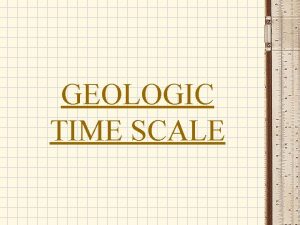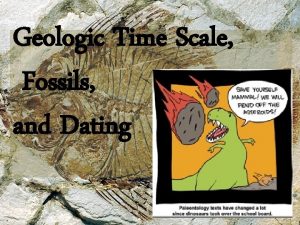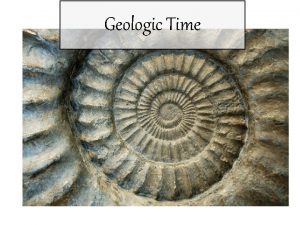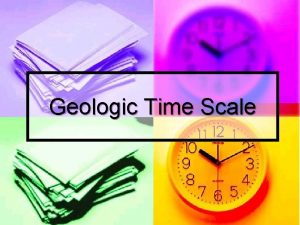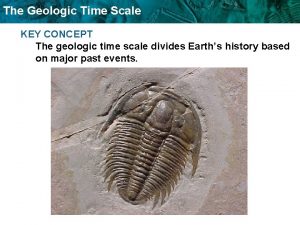Geologic Time Scale Geologic Time Scale A chart























- Slides: 23

Geologic Time Scale

Geologic Time Scale A chart that divides Earth’s history into different time units Longest Eons Eras Periods Shortest Epochs

Mass Extinction • The extinction (dying off) of many species on earth within a short period of time

Sudden Mass Extinction Events Climate Change Meteorite Impact Volcanoes

Gradual Mass Extinction Events Geography and Evolution Land bridge o Piece of land that connects two previously separated continents Geographic Isolation o Separation of a population from the rest of its species due to a physical barrier (ocean, mountain)

Precambrian Era § Includes Proterozoic, Archean, and Hadean Epochs § 4. 5 billion years ago to. 5 billion years ago § 90% of Earth’s history § Organisms lived at the bottom of the sea § Simple unicellular organisms

Paleozoic Era § Early Paleozoic Era § Age of Invertebrates q Cambrian Period § Began with a Cambrian explosion § Abundance of new life forms § Warm climate § All invertebrates lived in water

Paleozoic Era § Early Paleozoic Era § Age of Invertebrates q Ordovician § Rising sea levels caused flooding § Many inland seas § Ended in mass extinction

Paleozoic Era § Middle Paleozoic Era § Age of Fishes q Silurian § Many invertebrates survived § Vertebrates (fish, insects) evolved

Paleozoic Era § Middle Paleozoic Era § Age of Fishes q Devonian § Multitude of fishes § First plants appeared § Colliding continents created mountains § Ended with mass extinction

Paleozoic Era § Late Paleozoic Era § Age of Amphibians q Carboniferous § Dense tropical forests grew § New mountains formed § Coal swamps (source of coal we use today) § Amphibians developed and spent time on land

Paleozoic Era § Late Paleozoic Era § Age of Amphibians q Permian Reptiles developed Pangaea created Coal swamps dried up Climate became cooler an drier § Permian mass extinction killed 70% land creatures and 95% water creatures § §

Mesozoic Era § Geology 251→ 65. 5 million years § Pangea broke up in the late Triassic Period creating: 1. Gondwanaland �Southern Continent �Antarctica, Africa, Australia, South America 2. Laurasia �Northern Continent �North America, Europe, Asia ago

Mesozoic Era § Life 251→ 65. 5 million years § Dinosaurs § Dominant land animals § Legs positioned directly below hips § Allowed them to walk upright § Plesiosaurs § Marine reptiles § Pterosaurs § Flying reptiles § Mammals § Very small ago

Mesozoic Era 251→ 65. 5 million years § Climate § No ice caps § Warmer § Inland seas covered most continents § Oceans had more water ago

Mesozoic Era § North America 251→ 65. 5 million years § Slow and steady westward movement § Rocky mountains formed § Salt deposits left by receding seas ago

Mesozoic Era 251→ 65. 5 million years § Plants § First flowering plants § Cone-bearing trees ago

Mesozoic Era § Mass Extinction 251→ 65. 5 million years § Ended 65. 6 mya § Meteorite impact? ? § Volcanic eruption? ? ago

Cenozoic Era 65. 5 million years ago →Today § Most recent, so fossil/rock record is better preserved § We live in Holocene Epoch § Began about 10, 000 years ago

Cenozoic Era 65. 5 million years ago →Today § Geology § Mountains created § India and Asia → Himalayas § Africa and Europe → Alps § West coast of N. A. → Cascades and Sierra Nevada

Cenozoic Era § Life 65. 5 million years ago →Today § Age of Mammals § Flowering plants and grasses evolved creating new food sources § Allowed many new species to evolve § Mega-mammals § Migrated over land bridges § Became extinct due to climate change

Cenozoic Era 65. 5 million years ago →Today § Life § Humans § Oldest human fossils 6 million years old § Migrated to Europe, Asia, then N. A.

Cenozoic Era § Climate 65. 5 million years ago →Today § Early Cenozoic § Warm § Middle Cenozoic § Began to cool § Late Cenozoic § Pleistocene Epoch § Ice Age § Glaciers created § Covered 30% of land § Sea levels dropped
 Compare geologic time with the geologic column.
Compare geologic time with the geologic column. How is the geologic time scale organized
How is the geologic time scale organized Earth’s history and geologic time graphic organizer
Earth’s history and geologic time graphic organizer How is the geologic time scale organized
How is the geologic time scale organized Geologic time scale animals
Geologic time scale animals The longest subdivision of the geologic time scale is the
The longest subdivision of the geologic time scale is the Geologic time scale drawing
Geologic time scale drawing Nooa
Nooa Amantz
Amantz Geologic time scale poem
Geologic time scale poem Geologic time scale
Geologic time scale Geologic time scale drawing
Geologic time scale drawing Fossils
Fossils Geological time scale graphic organizer
Geological time scale graphic organizer 4 divisions of geologic time
4 divisions of geologic time Time scale
Time scale What is the longest subdivision in geologic time
What is the longest subdivision in geologic time Chapter 12 geologic time
Chapter 12 geologic time Caprock
Caprock What
What Geologic column definition
Geologic column definition Pilot knob volcano
Pilot knob volcano Geologic history
Geologic history Geologic history
Geologic history

